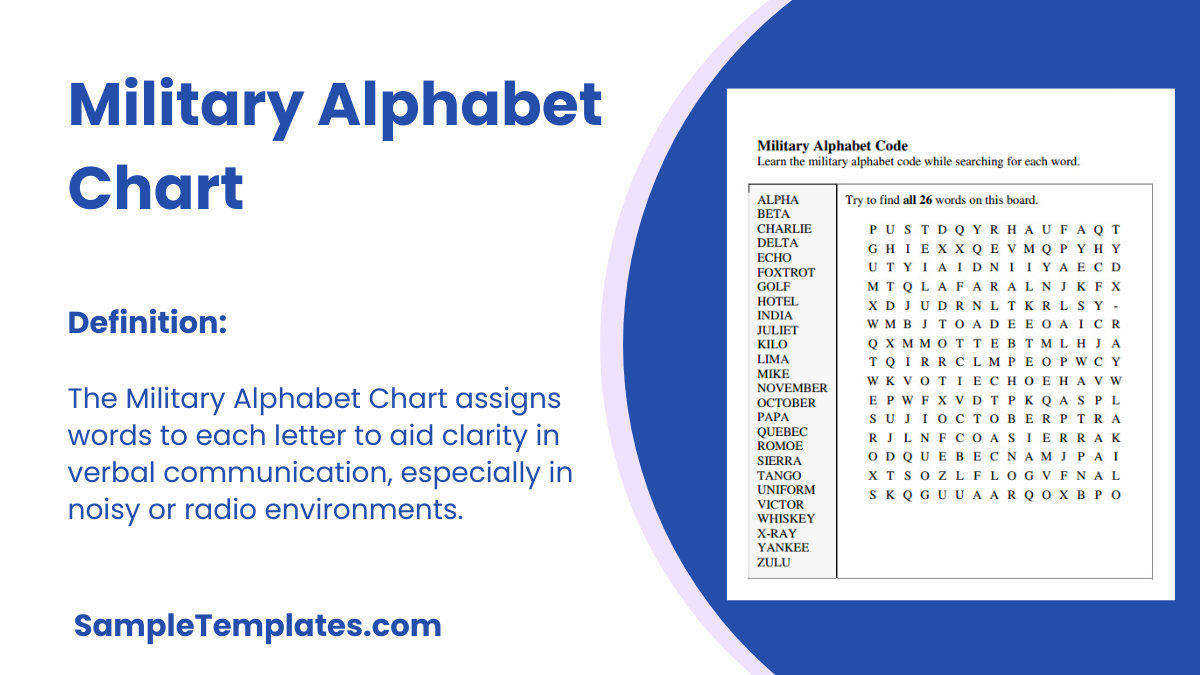This is the NATO phonetic chart that consists of 26 alphabet to correspond to the 26 English letters in the alphabetic order from Alpha to Zulu. It was adopted by the US military and other NATO countries in 1956 and has maintained the use. It is now even used by civilians in aviation and other uses in day to day activities. The Basic Organization Chart is available for download in formats like PDF, Word, Excel and PSD. One can use it as is or print it on paper. A phonetic basically is a list of words used in identifying a message sent over radio in a coded manner.
Military Phonetic Alphabet Chart
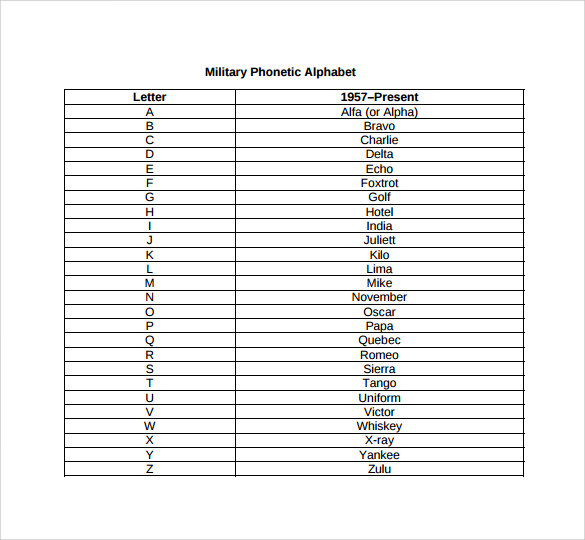
Military Alphabet Chart Pdf
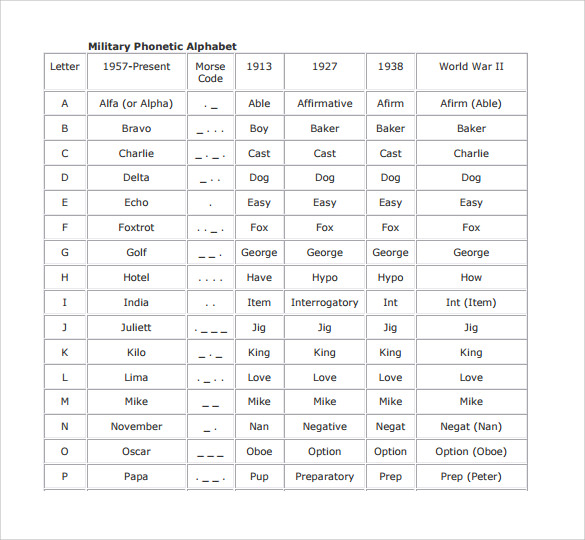
Tips For Learning The Military Alphabet
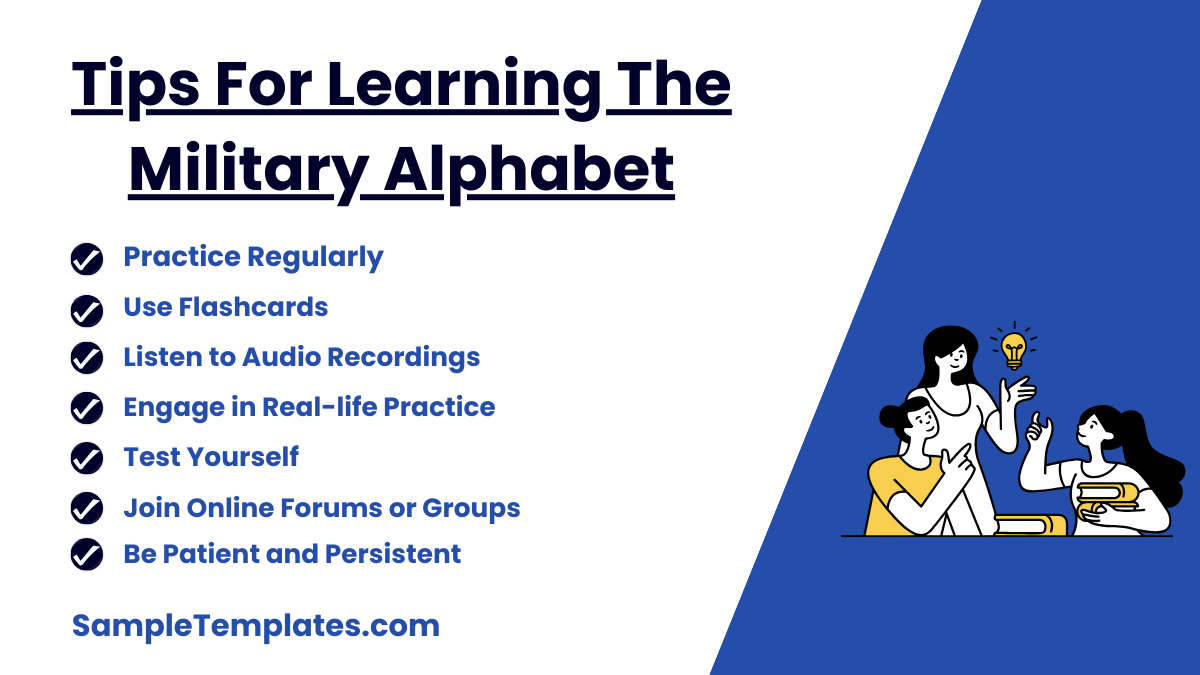
Learning the military alphabet, also known as the NATO phonetic alphabet, can enhance communication clarity, especially in noisy environments or when precise verbal exchange is crucial. Here are some practical tips to help you master this alphabet:
- Familiarize Yourself with the Alphabet: Start by studying the alphabet list from Alpha (A) to Zulu (Z). Understand each word’s phonetic pronunciation and corresponding letter format.
- Practice Regularly: Consistent practice is key. Recite the alphabet daily, focusing on any letters you find challenging until you can effortlessly recall each code word.
- Use Flashcards: Create flashcards with the sample letter on one side and the corresponding phonetic term on the other. This method helps reinforce your memory and makes learning interactive.
- Listen to Audio Recordings: Find audio recordings or apps that pronounce the phonetic alphabet. Listening to correct pronunciations can improve your ability to remember and replicate the sounds accurately.
- Engage in Real-life Practice: Use the phonetic alphabet in everyday situations. For example, spell out names, addresses, or license plates using the military alphabet. This real-life application solidifies learning.
- Test Yourself: Regularly test yourself, or have others test you, to assess your recall and ability to quickly respond with the correct term.
- Use Mnemonics: Create mnemonic devices to remember the alphabet more easily. For instance, linking images or stories to each word can aid memory.
- Join Online Forums or Groups: Participate in forums or online communities where you can practice the phonetic alphabet with others, receive feedback, and gain confidence in using it.
- Apply It in Gaming or Simulations: If you’re involved in activities like amateur radio, flight simulation games, or military gaming, use the phonetic alphabet to communicate within these contexts.
- Be Patient and Persistent: Learning a new system takes time. Stay patient, practice persistently, and your proficiency with the military alphabet will improve.
By integrating these tips into your learning process, you can efficiently master the military alphabet, enhancing both your personal and professional communication skills.
Military Alphabet Chart Download
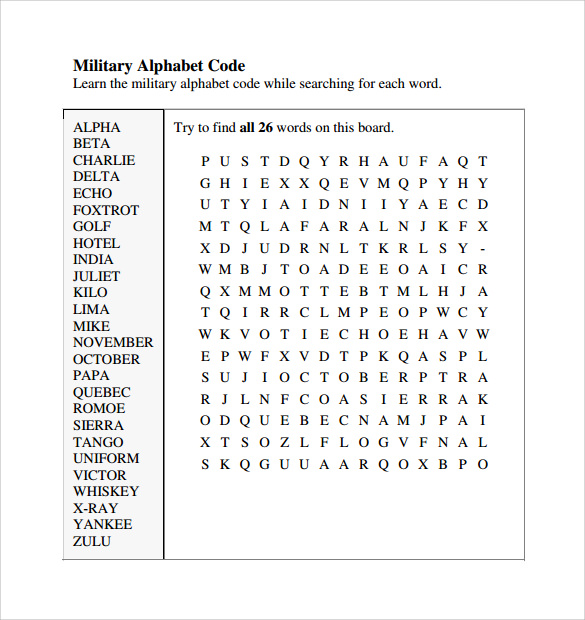
Sample Military Alphabet Chart
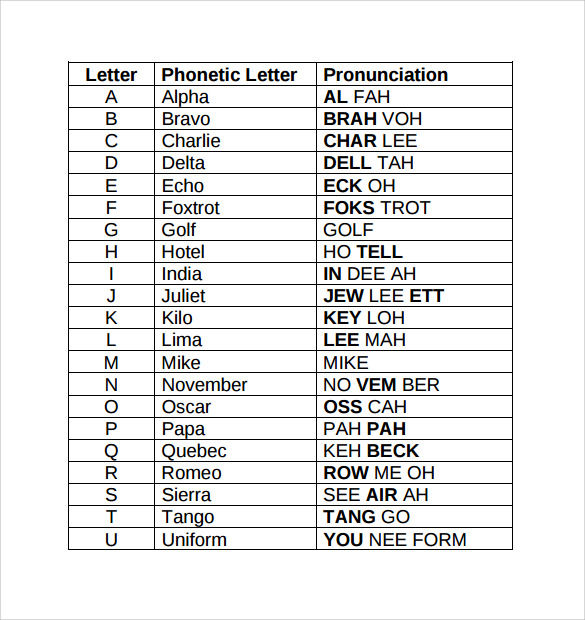
Free Military Alphabet Chart
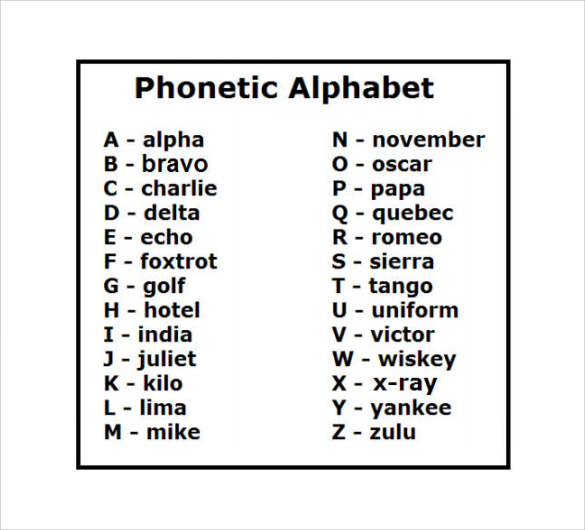
History of the Military Alphabet
The military alphabet, officially known as the NATO phonetic alphabet, is a spelling alphabet—a set of words used to stand for the letters of an alphabet in oral communication. Each word (“code word”) in the phonetic alphabet typically corresponds to one letter, ensuring clarity and precision during voice communications. Here is a brief history of how this alphabet developed and came into widespread use:
Early Development
- 1927: The International Telecommunication Union (ITU) developed the first internationally recognized spelling alphabet to address communication issues experienced during the First World War. This initial version had several changes over the following decades.
World War II
- 1941: The U.S. military implemented a phonetic alphabet for use across different branches. Known as the Joint Army/Navy Phonetic Alphabet, it included words like Able, Baker, and Charlie. However, this alphabet still faced issues with clarity among diverse speakers from different linguistic backgrounds.
Post-World War II and NATO Adoption
- 1956: The post-war complexities and the establishment of NATO necessitated a more universally understandable alphabet. NATO and the ITU collaborated on a phonetic alphabet that would be intelligible regardless of language differences among NATO allies.
The NATO Phonetic Alphabet
- 1957: After research and testing by NATO nations, the current NATO phonetic alphabet was implemented. It was specifically designed to be easily pronounced and recognized by all NATO allies. This version includes well-known representations like Alpha, Bravo, Charlie, Delta, and so forth.
Why It Matters
The NATO phonetic alphabet was created not just for military use but also for civil aviation due to the critical nature of clear communication in airspace management. It minimizes the risk of similar-sounding letters (like “m” and “n” or “p” and “b”) being mistaken for one another, a common issue in noisy environments or over poor communication channels.
Modern Usage
Today, this phonetic alphabet is not only a fundamental component in military and aviation fields but also widely used in various civilian sectors where clear and unambiguous communication is necessary. It’s employed in customer service, telecommunications, and even in the entertainment industry to clarify spellings or communicate precise messages.
This phonetic alphabet’s history reflects ongoing efforts to improve communication safety and efficiency across different domains, both military and civilian, on a global scale.
Military Alphabet Chart Simple

Military Phonetic Alphabet Chart
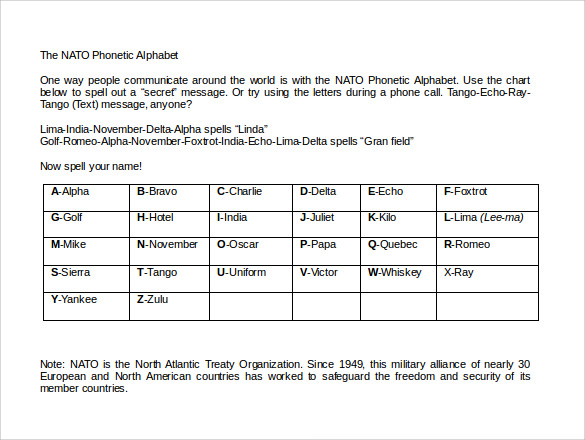
What is the military alphabet A to Z?
The military alphabet A to Z includes: Alpha, Bravo, Charlie, Delta, Echo, Foxtrot, Golf, Hotel, India, Juliett, Kilo, Lima, Mike, November, Oscar, Papa, Quebec, Romeo, Sierra, Tango, Uniform, Victor, Whiskey, X-ray, Yankee, Zulu.
Is Military Alphabet a Phonetic Alphabet?
Yes, the military alphabet is a phonetic alphabet used internationally in telecommunications and aviation to ensure clarity and avoid miscommunication by assigning code words to each letter.
What does echo Zulu mean?
In the military alphabet, “Echo Zulu” represents the letters “E” and “Z.” This combination does not have a specific meaning unless used in a particular context, such as a call sign, coordinates, or operational codes.
If you have any DMCA issues on this post, please contact us!
Related Posts
Weekly Schedule Samples & Templates
Contractual Agreement Samples & Templates
FREE 9+ Amazing Sample Church Bulletin Templates in PSD | PDF
Sample Business Card Templates
Sample Cashier Job Descriptions
Questionnaire Samples
FREE 10+ Sample HR Resource Templates in PDF
FREE 10+ HR Consulting Business Plan Samples in MS Word | Google Docs | Pages | PDF
FREE 49+ Sample Job Descriptions in PDF | MS Word
FREE 16+ Nonprofit Budget Samples in PDF | MS Word | Excel | Google Docs | Google Sheets | Numbers | Pages
FREE 13+ Academic Calendar Templates in Google Docs | MS Word | Pages | PDF
FREE 10+ How to Create an Executive Summary Samples in Google Docs | MS Word | Pages | PDF
FREE 23+ Sample Event Calendar Templates in PDF | MS Word | Google Docs | Apple Pages
Company Profile Samples
FREE 10+ Leadership Report Samples [ Development, Training, Camp ]
